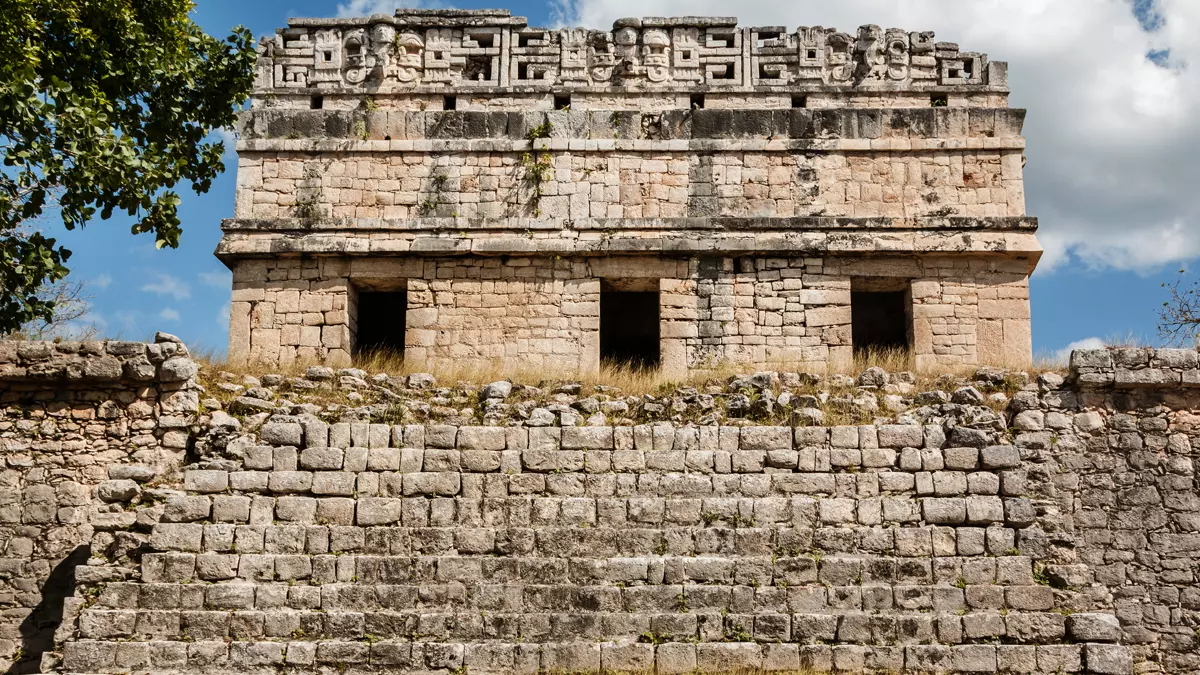Section 4 of the Mayan Train Revitalizes Archaeological Zones
Through the Program for the Improvement of Archaeological Zones, section 4 of the Mayan Train revitalizes archaeological zones and installs Visitor Service Centers.
The advance of the Mayan Train is a palpable proof of the dedication of the Ministry of Culture of the Mexican administration and the National Institute of Anthropology and History (INAH) in the preservation and study of the pre-Hispanic heritage wealth of the nation.
In addition, it shows how these government entities support the collective aspiration of Mexicans for an equitable and just country, which promotes “well-being for each and every one.”
This commitment was emphasized by the general director of the INAH, Diego Prieto Hernández, during his speech at the morning press conference of the Mexican president, Andrés Manuel López Obrador, where the progress of section 4 of the Mayan Train was detailed, a priority initiative that connects the cities of Izamal, in Yucatan, and Cancun, in Quintana Roo.
You might also be interested in: Mayan Train will bring Social Justice
Section 4 of the Mayan Train Revitalizes Archaeological Zones
In this sector, which includes 239 kilometers of railway route, construction authorizations by INAH have already been granted for the main railway route, as well as for additional constructions: stations, stops, wildlife crossings and other projects such as the improvement of the Merida-Cancun highway.
As of June 12, 2023, the anthropologist Prieto specified, in section 4 of the Mayan Train, 4,228 historical real estate have been identified and preserved; 570 furniture-type objects, such as ceramic fragments or metates; 42,617 ceramic fragments; 16 human tombs and 110 natural features associated with the presence of groups of the great Mayan civilizing legacy.
Section 4 of the Mayan Train Revitalizes Archaeological Zones
Prieto also highlighted that this segment, thanks to the Program for the Improvement of Archaeological Zones (PROMEZA), is focusing on two places of immense heritage and tourist value: Chichén Itzá and Ek’ Balam.
Chichén Itzá, a site recognized in 1988 as World Heritage by the United Nations Educational, Scientific and Cultural Organization, presents 95% progress in the conservation work of the most emblematic monuments in the accessible area: the Ball Court, the Sacred Cenote, the Castle and the Church, as well as the temples of Los Jaguares, Norte, de los Guerreros, de las Mesas, de las Monjas and de Venus.
In the areas of Chichén Itzá that are about to open to the public, such as the Serie Inicial or Chichén Viejo architectural ensembles, 89% progress is reported in terms of major renovation and explorations.
Other work at Chichén Itzá includes the construction of the site museum, which reports 25% progress, and the Visitor Service Center (Catvi), which currently has 22% construction progress.
Referring to the Ek’ Balam Archaeological Zone, also located in Yucatan, the INAH official pointed out that, as a result of PROMEZA, 70% progress has been achieved in the investigation and preservation of the Ball Court, Structure 14, the reliefs and panels of the East Square, Patolli and the Acropolis.
In collaboration with the company ICA, the last details are being refined to begin the construction of the Catvi corresponding to Ek’ Balam.
During the morning press conference of the Presidency of Mexico, the delivery, made on June 11, 2023, at the Los Pinos Cultural Complex, in Mexico City, of the Carlos Montemayor 2023 Award to the ethnologist and researcher of the Directorate of Historical Studies of the INAH, Leonel Durán Solís.
This recognition, affirmed the anthropologist Prieto Hernández, is granted to individuals who, like Leonel Durán or Carlos Montemayor himself, have supported groups and movements that fight for social justice and have defended the indigenous and Afro-descendant communities of our country.
The work of conserving and promoting cultural wealth in the most outstanding archaeological sites of the Mayan Train, such as Chichén Itzá and Ek’ Balam, reflects the sustained commitment of the Mexican government to the preservation of its heritage.
At the same time, it is a powerful reminder that, in its journey towards a more equitable and just society, Mexico continues to have the capacity and the determination to respect and celebrate its storied past while embracing the progress and innovation of the future.
Similar news to Section 4 of the Mayan Train Revitalizes Archaeological Zones:
- Mayan and Interoceanic Train Would Connect with Central America
- Mayan Train Boosts Real Estate Development in the Southeast
- Urban Development Triggers Extreme Heat not the Mayan Train
Ad by Section 4 of the Mayan Train Revitalizes Archaeological Zones
R. Section 4 of the Mayan Train Revitalizes Archaeological Zones
Not what you’re looking for?
try a search











Subscribe to be able to comment and be part of the community.